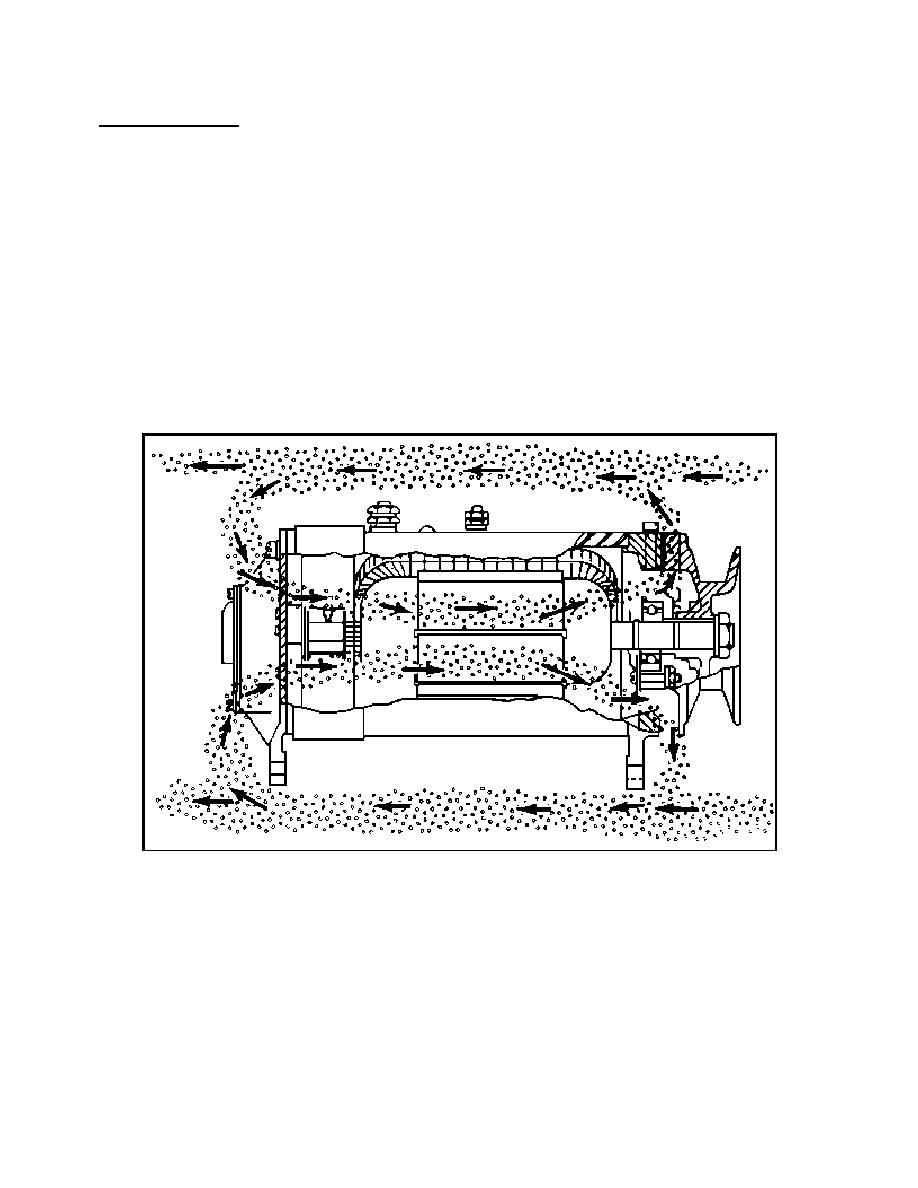
Lesson 1/Learning Event 2
Inductor Alternator
An inductor alternator employs a fixed, nonrotating field coil that induces excitation in the central
portion of the rotor as if it were a solenoid. Each end of the rotor assumes a polarity.
A multilobed segment is attached to each end of the rotor. The segment varies the reluctance in
the magnetic circuit as it rotates. As a result, the fixed stator poles experience a variation in
magnetic strength or coupling and produce a resulting output voltage in the stator coils. In contrast
to other types of generators, the iron does not experience a flux reversal. Consequently, there is
only a 50-percent use of iron in the stator. Advantages of an inductor alternator are easier winding
construction for field and stator coils; simplified cooling; it is brushless; and it has an integral solid
rotor without windings that permits high-speed operation. Disadvantages of an inductor alternator
are that it has less than 50 percent use of iron, resulting in a heavier unit and the increased total air
gap in the magnetic circuit requires more excitation
AIR-COOLED GENERATOR
FIGURE 13. AIR-COOLED GENERATOR.
In tank-automotive applications, air cooling is the most common method. The usual arrangement
consists of a fan that forces air through the alternator to cool the rotor, stator, and rectifier.
23



 Previous Page
Previous Page
